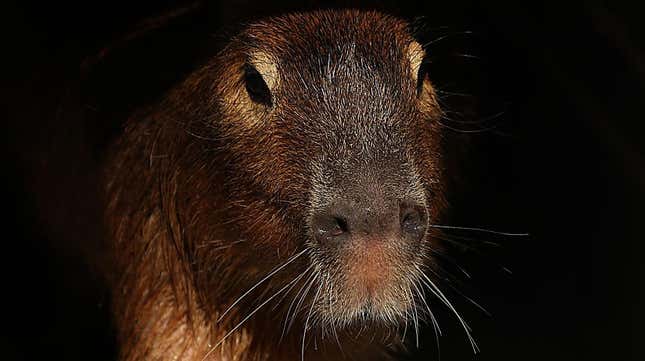
You know how capybaras always seem to have a slightly skeptical look on their faces? Turns out what they’re skeptical of might be rich people’s bullshit. Now, in Argentina, they’re fighting back. Groups of the charismatic rodents have been causing a ruckus in the fancy-pants gated community of Nordelta, crapping in the streets and hacking up manicured lawns like magnificent little punk asses.
Naturally, the hoity-toity residents aren’t too thrilled about being the objects of the animals’ scorn. Capybaras, known locally as carpinchos, are the world’s largest rodents, measuring up to 3 feet (1 meter) in height and weighing as much as 175 pounds (79 kilograms). They can do some serious damage stomping around a garden, and they’ve also apparently bitten Nordelta residents’ dogs.
Some residents have reportedly brought out their guns to ward off the animals. But if we’re picking sides here, I stand with the capybara comrades. The rodents are native to the region where Nordelta now stands, in the wetlands of the Lujan River Delta near Buenos Aires. The fancy community was just erected there in 2000. Experts say that means this can hardly be considered an invasion. Instead, it’s a reclamation project.
“It’s the other way round: Nordelta invaded the ecosystem of the carpinchos,” esteemed ecologist and activist Enrique Viale told the Guardian. “Wealthy real estate developers with government backing have to destroy nature in order to sell clients the dream of living in the wild—because the people who buy those homes want nature, but without the mosquitoes, snakes, or carpinchos.”
Viale has been a prominent voice in a decade-long campaign demanding Argentina pass a law to protect wetland areas from development—perhaps not as flashy a strategy as the capybaras’ guerilla campaign to take back the land, but a good idea nonetheless. By paving over land on which capybaras and other wildlife depend on, developers were essentially inviting trouble. There have been other devastating ecological implications of the Nordelta development, too, including building out vast stretches of impervious surfaces, which invites flooding. Destroying waterways has ushered in more forest fires as well. Paving over paradise hasn’t just affected the capybaras either, and it’s not Nordelta’s rich residents who suffer most when these environmental disasters hit; it’s the poor.
So while this may at first blush seem like an infestation, it’s really more like class warfare; a struggle for land justice. ¡Entonces, solidaridad con los carpinchos!